Home Gym Equipment Build Your Personalized Fitness Haven at Home! Unleash your fitness potential with the right home gym equipment! This guide explores essential gear for beginners, budget-friendly options, space-saving solutions, and even functional training tools. Discover how a home gym can be cheaper than a membership, keep you motivated, and fit seamlessly into your life. Learn about safety tips, proper form, and FAQs to ensure an enjoyable and effective workout experience. Start crafting your personalized fitness haven today – your journey to a healthier you awaits!
Introduction
I’m excited to be your guide on this journey to creating your own personal fitness haven. Whether you’re a seasoned gym-goer or just starting out, having the right equipment at home can be a game-changer for your workout routine.
But before we dive into the must-have gear, let’s talk about why home workouts are becoming increasingly popular:
- Convenience: No more traffic jams or waiting for machines! Work out on your own schedule, in your own pajamas, whenever the mood strikes.
- Customization: Tailor your workouts to your specific goals and fitness level. No need to stick to generic gym routines.
- Cost-effective: In the long run, skipping gym memberships and commuting costs can save you a significant amount of money.
- Privacy and comfort: Enjoy the privacy and comfort of your own home without feeling self-conscious.
Having the right equipment enhances your home workout experience by:
- Providing variety: Keep your workouts fresh and engaging with different tools and exercises.
- Increasing effectiveness: Target specific muscle groups and achieve your fitness goals faster.
- Boosting motivation: A well-equipped space can inspire you to stay consistent and reach your full potential.
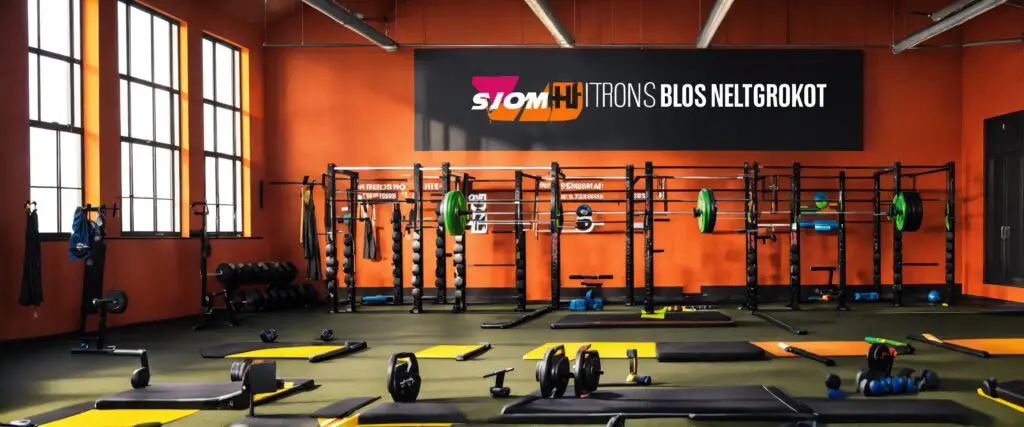
Setting Up Your Home Gym
Before you start filling your cart with fitness gadgets, let’s delve into the crucial planning stages:
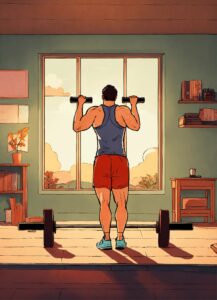
1. Space matters:
- Assess your available space: Measure your designated area carefully and consider future additions. Avoid feeling cramped while exercising.
- Choose the right spot: Select a well-ventilated area with a sturdy floor that can handle weights and impact movements. Opt for good lighting and access to fresh air (windows or portable fans) for comfort.
- Think functionality: Plan your layout based on your workout style and equipment. Will you be mostly lifting weights, practicing HIIT routines, or focusing on yoga and bodyweight exercises?
2. Equipment placement for safety and efficiency:
- Safety first: Leave adequate clearance around equipment for free movement and to avoid accidents. Keep heavy weights secured and away from walkways.
- Flow like water: Arrange your equipment for a smooth workout flow. Group similar items together (weights, yoga mats, etc.) and plan transitions between exercises.
- Utilize walls and corners: Mount equipment like pull-up bars or storage shelves on walls to maximize floor space. Opt for corner placement for bulky items like squat racks.
- Mirrors are your friend: Place a mirror strategically for form checks and motivation, but ensure it’s positioned safely away from weights or exercise paths.
Additional tips:
- Invest in rubber mats: Protect your floor and provide cushioning for exercises.
- Consider storage solutions: Keep your space organized with racks, shelves, and baskets for easy access and clutter prevention.
- Personalize your space: Add motivational quotes, pictures, or plants to create a workout environment you love.
Cardiovascular Equipment
Now that you’ve planned your home gym space, it’s time to choose the equipment that gets your heart rate up and blood flowing. Here are some of the most popular cardio options for your home gym:
1. Treadmill:
The classic choice for runners and walkers, treadmills offer a versatile platform for various cardio workouts.
- Pros: Simulates outdoor running/walking, adjustable speed and incline, weatherproof, wide range of workout programs available.
- Cons: Can be bulky and expensive, requires regular maintenance, high-impact exercises might not be suitable for everyone.
2. Stationary Bike:
Stationary bikes provide a low-impact cardio workout that’s easy on your joints.
- Pros: Gentle on knees and ankles, adjustable resistance levels, comfortable seating, perfect for watching TV or reading while exercising.
- Cons: Limited movement compared to other options, might not engage as many muscle groups, some find it less engaging than other cardio machines.
This full-body workout engages major muscle groups and provides excellent cardiovascular benefits.
- Pros: Low-impact on joints, works multiple muscle groups simultaneously, effective calorie burner, improves core strength and posture.
- Cons: Requires learning proper technique to avoid injury, can be challenging for beginners, larger footprint compared to other machines.
Combining elements of walking, running, and stair climbing, elliptical trainers offer a low-impact, full-body workout.
- Pros: Easy on joints, adjustable stride length and resistance, comfortable movement, good for beginners and all fitness levels.
- Cons: Might be less engaging than running or rowing, limited to specific movement patterns, can be bulky and expensive.
5. Jump Rope:
This simple yet effective tool offers a high-intensity, portable cardio workout that’s inexpensive and space-saving.
- Pros: Affordable, portable, burns a lot of calories in a short time, improves agility and coordination, fun and challenging workout.
- Cons: Requires coordination and practice, high-impact on joints, might not be suitable for everyone.
Choosing the right cardio equipment depends on your fitness goals, personal preferences, and budget. Consider factors like impact level, muscle groups engaged, workout variety, and available space before making your decision.
Remember, these are just some popular options – there are many other types of cardio equipment available, like stair climbers, elliptical bikes, and even dance platforms. Explore your options and find what works best for you to create a home gym that keeps you motivated and reaching your fitness goals!
Strength Training Equipment for Home Gym Equipment
Now that your heart is pumping with the right cardio choices, let’s focus on sculpting and strengthening your muscles with some key home gym equipment:
1. Dumbbells:
The ultimate versatile weights for home training, dumbbells allow you to target almost any muscle group with a wide range of exercises.
- Pros: Highly versatile, adjustable weight options with various sets or individual purchases, compact storage, suitable for beginners and advanced exercisers.
- Cons: Requires more coordination than fixed-weight machines, might not offer enough weight for very experienced lifters.
2. Kettlebells:
These dynamic weights add an extra challenge to your workouts with their off-center mass, engaging your core and improving stability.
- Pros: Functional movements that mimic everyday activities, improve core strength and stability, compact and portable, various weights available.
- Cons: Requires learning proper technique to avoid injury, might be challenging for beginners, limited exercise variety compared to dumbbells.
A weight bench unlocks a whole new level of strength training exercises for your upper and lower body.
- Pros: Expands exercise possibilities for chest, back, shoulders, arms, and core, adjustable incline and decline positions for targeted workouts, comfortable and stable platform for lifting.
- Cons: Can be bulky and require more space, might be expensive depending on features, not essential for all workout styles.
4. Resistance Bands:
Lightweight, portable, and affordable, resistance bands offer a surprisingly challenging workout for various muscle groups.
- Pros: Affordable, compact and portable, versatile for upper and lower body exercises, adjustable resistance levels, good for travel or home workouts.
- Cons: Might not offer enough resistance for very experienced lifters, requires more control and stabilization compared to weights, less variety compared to free weights.
This simple yet effective tool allows you to build upper body strength and improve your grip with pull-ups, chin-ups, and other exercises.
- Pros: Affordable and space-saving, effective for building upper body strength and back muscles, various grip positions for different exercise variations.
- Cons: Requires a sturdy doorway or mounting point, might be challenging for beginners, limited exercise variety compared to other equipment.
Remember, this is just a starting point. You can mix and match this equipment to create a home gym that fits your budget, space constraints, and fitness goals. Don’t hesitate to explore other options like medicine balls, TRX straps, or stability balls to add variety and challenge to your workouts.
Functional Training Equipment for Home Gym Equipment
Building strength and endurance is important, but true fitness involves moving your body with control and coordination, just like you do in everyday life. Here’s where functional training equipment comes in, helping you mimic real-world movements and improve overall fitness:
1. Stability Ball:
This inflatable ball adds an element of instability to various exercises, engaging your core muscles for better balance and stability.
- Pros: Improves core strength and stability, versatile for various exercises like planks, bridges, and seated workouts, affordable and portable.
- Cons: Requires good balance and coordination, might be challenging for beginners, limited to specific exercise types.
2. Medicine Ball:
These weighted balls come in various sizes and weights, adding dynamic resistance to throws, slams, squats, and more.
- Pros: Improves power, agility, and coordination, versatile for full-body workouts, good for cardio and strength training.
- Cons: Requires proper technique to avoid injury, might be challenging for beginners depending on weight, limited to specific exercise variations.
3. Bosu Ball:
A half-stability ball, half-exercise ball, the Bosu Ball offers a unique training platform for balance, core, and lower body exercises.
- Pros: Improves balance, agility, and core strength, adds variety to workouts, can be used for both upper and lower body exercises.
- Cons: Requires good balance and coordination, might be challenging for beginners, less versatile than stability balls.
This portable system utilizes your body weight and gravity to create challenging suspension exercises that build strength, stability, and flexibility.
- Pros: Highly versatile for various exercises targeting all muscle groups, portable and space-saving, adjustable difficulty levels.
- Cons: Requires learning proper technique to avoid injury, might be challenging for beginners, initial investment cost.
5. Foam Roller:
This self-massage tool helps improve muscle recovery, flexibility, and circulation, promoting better performance and reducing soreness.
- Pros: Improves muscle recovery and flexibility, reduces soreness and tension, promotes relaxation and circulation.
- Cons: Might be uncomfortable for beginners, requires learning proper rolling techniques, not directly related to functional training exercises.
Remember, functional training equipment is a great addition to your home gym, but it shouldn’t replace traditional strength training or cardio. Aim for a balanced approach to achieve your overall fitness goals.
Additional Equipment
Beyond the core categories we’ve explored, there are additional pieces of equipment that can enhance your home gym experience and cater to specific fitness goals:
1. Yoga Mat:
Essential for yoga, Pilates, bodyweight exercises, and stretching, a yoga mat provides a comfortable and cushioned surface for floor work. Look for options with good grip and non-slip properties.
2. Resistance Tubes:
Lightweight, portable, and affordable, resistance tubes offer variable resistance for upper and lower body exercises. Great for strength training, rehabilitation, and adding variety to your workouts.
3. Punching Bag and Boxing Gloves:
Channel your inner Rocky with a punching bag and gloves. This combo provides a high-intensity cardio workout, improves coordination and agility, and can be a great stress reliever. Just ensure proper technique and hand protection.
4. Step Platform:
Elevate your cardio and leg workouts with a step platform. Perfect for step aerobics, lunges, squats, and plyometrics, it adds intensity and challenges your balance. Choose a platform with adjustable height for varied workouts.
5. Exercise Ball:
Similar to a stability ball, an exercise ball can be used for core strengthening, balance exercises, and stretching. However, it often comes in larger sizes and can be used for seated workouts like bicep curls or overhead presses.
Remember:
- This is not an exhaustive list, and there are many other options available depending on your interests and goals.
- Consider your space limitations and budget when choosing equipment.
- Start with the basics and gradually add more pieces as you progress.
- Most importantly, have fun and enjoy your home gym journey!
Accessories and Miscellaneous
While the equipment itself is crucial, don’t underestimate the power of some well-chosen accessories to truly elevate your home gym experience:
Monitor your progress, stay motivated, and track key metrics like steps, heart rate, and calories burned with a fitness tracker. Choose one that aligns with your specific needs and desired features.
2. Water Bottle and Hydration Pack:
Staying hydrated is essential for any workout. Invest in a reusable water bottle or hydration pack to keep yourself conveniently replenished throughout your sessions.
3. Gym Flooring:
Protect your floor and joints with proper gym flooring. Rubber mats or interlocking tiles offer cushioning and grip, reducing noise and preventing damage.
4. Mirror:
A mirror helps you maintain proper form, track your technique, and stay motivated by seeing your progress. Place it strategically for optimal viewing during your workouts.
5. Speaker System:
Pump up the energy with your favorite music or workout playlists. Opt for a wireless speaker with good sound quality and water resistance for a more immersive experience.
Bonus:
- Jump rope: This simple tool offers a high-intensity, portable workout for getting your heart rate up and building agility.
- Foam roller: Improve muscle recovery, flexibility, and reduce soreness with self-massage using a foam roller.
- Yoga towels: These absorbent towels provide grip and prevent slipping during yoga or floor exercises.
- Cooling towel: Stay cool and comfortable during intense workouts with a cooling towel that activates with water.
- Resistance bands with loops: Offer additional versatility for strength training and stretching exercises.
Maintenance and Safety
Having a well-maintained and safe home gym is crucial for preventing injuries and maximizing your workout experience. Here are some key tips to remember:
Equipment Maintenance:
- Regularly clean and wipe down your equipment: Remove sweat, dust, and grime to prevent bacterial growth and corrosion. Use appropriate cleaning solutions based on the equipment material.
- Inspect equipment for wear and tear: Check for loose bolts, frayed cables, cracked weights, or any other damage before each use. Repair or replace damaged equipment immediately.
- Lubricate moving parts as recommended: Consult your equipment manuals for specific instructions and lubrication points. This reduces friction and ensures smooth operation.
- Store equipment properly: When not in use, store your equipment in a cool, dry place away from direct sunlight and moisture. This helps prevent rust and damage.
- Follow manufacturer’s instructions: Each piece of equipment comes with specific care and maintenance instructions. Refer to these manuals for optimal usage and extended lifespan.
Safety Precautions:
- Warm up before and cool down after every workout: Prepare your muscles for exercise and prevent injuries with proper warm-up and cool-down routines.
- Use proper form and technique: Learn the correct form for each exercise to avoid muscle strain or joint pain. Don’t hesitate to seek guidance from a personal trainer or online resources.
- Start light and gradually increase weight/intensity: Overtraining can lead to injuries. Begin with lighter weights or lower intensity levels and gradually progress as you build strength and endurance.
- Listen to your body: Take rest days when needed and avoid pushing yourself beyond your limits. Pain is a signal to stop and adjust your workout.
- Don’t lift weights beyond your capacity: Use weights that you can comfortably handle with good form. Avoid ego lifting and prioritize safety over lifting heavier weights.
- Secure weights and equipment: Ensure weights are properly racked after use and keep free weights and other equipment stored away from walkways to prevent accidents.
- Create a safe and clutter-free workout space: Remove any obstacles or potential hazards from your exercise area. Use mats for cushioning and ensure adequate ventilation.
- Have a spotter for heavy lifts: If lifting heavy weights, always have a trusted spotter to assist and prevent accidents.
- Consider using safety gear: Depending on your exercises, consider using wrist straps, lifting belts, or knee sleeves for added support and protection.
Additional Safety Tips:
- Invest in good quality shoes: Proper footwear provides stability, traction, and support during your workouts.
- Stay hydrated: Drink plenty of water before, during, and after your workouts to avoid dehydration.
- Be aware of your surroundings: Pay attention to your movements and avoid distractions during your exercise routine.
- Have a first-aid kit readily available: Be prepared for minor injuries by having a first-aid kit stocked with essential supplies.
By following these maintenance and safety tips, you can create a safe and enjoyable home gym environment that supports your fitness goals for years to come. Remember, prioritize your safety and make informed choices to optimize your workout experience and avoid unnecessary risks.
Workout Ideas and Routines
Now that you’ve got the essential equipment and safety knowledge, let’s dive into some workout ideas and routines to kickstart your home gym journey! Remember, these are just examples, and you can adapt them to your fitness level, goals, and equipment availability.
Full-Body Workout Routine:
- Warm-up (5-10 minutes): Light cardio, dynamic stretches (jumping jacks, arm circles, leg swings)
- Squats: 3 sets of 8-12 reps (dumbbells, kettlebells, or bodyweight)
- Push-ups: 3 sets of as many reps as possible (modifications on knees or wall allowed)
- Rows: 3 sets of 8-12 reps (dumbbells, kettlebells, TRX, or resistance bands)
- Lunges: 3 sets of 10-15 reps per leg (bodyweight or with weights)
- Plank: 3 sets of 30-60 seconds hold
- Cool-down (5-10 minutes): Static stretches (hamstring stretch, quad stretch, chest stretch)
Cardiovascular Workout Plan:
- 30-minute Cardio Session: Choose one or combine activities like:
- Running/jogging on a treadmill
- Brisk walking outdoors or on a stationary bike
- Jump rope workout
- HIIT (High-Intensity Interval Training) on your equipment or bodyweight exercises
- Dance fitness video or class
Strength Training Program:
- Split Routine: Focus on different muscle groups on different days (3-4 workouts per week):
- Day 1: Chest, triceps, shoulders
- Day 2: Back, biceps
- Day 3: Legs, core
- Day 4: Rest or active recovery (yoga, stretching)
- 3-4 sets of 8-12 reps per exercise with weights you can control with good form.
- Increase weight or reps gradually as you get stronger.
Functional Training Circuit:
- 5-10 exercises focusing on compound movements that mimic everyday activities:
- Burpees
- Mountain climbers
- Box jumps (modification onto a step)
- Medicine ball throws
- Single-leg deadlifts
- Plank rotations
- Perform each exercise for 30-60 seconds with minimal rest between exercises.
- Complete 2-3 rounds of the circuit.
Remember, these are just starting points. You can find countless workout routines online or create your own based on your preferences and goals. Don’t be afraid to experiment and have fun while focusing on proper form and safety.
Additional Resources:
- Fitness apps: Many apps offer workout routines, tracking tools, and personalized plans.
- Online fitness communities: Connect with others and find motivation in online groups or forums.
- Certified personal trainers: Consider consulting a trainer for personalized guidance and workout plans.
With dedication and the right tools, your home gym can become a springboard to achieving your fitness goals and building a healthier, stronger you!
Maximizing Your Home Gym
You’ve got the equipment, the safety knowledge, and some workout ideas – now let’s explore how to truly maximize your home gym and get the most out of your fitness journey.
1. Create a Workout Schedule:
- Plan your workouts: Schedule specific days and times for exercise and stick to them as much as possible. Having a plan creates structure and accountability.
- Variety is key: Don’t fall into a workout rut! Alternate between cardio, strength training, functional exercises, and rest days to avoid plateaus and keep things interesting.
- Track your progress: Monitor your workouts in a journal or app to see your improvement and tailor your routine accordingly. Celebrate your achievements!
2. Personalize Your Workouts:
- Cater to your goals: Focus on exercises that align with your specific goals, whether it’s building muscle, losing weight, improving flexibility, or boosting cardiovascular health.
- Modify exercises: Adapt exercises to your fitness level and limitations. Don’t hesitate to use lighter weights, lower intensity, or easier variations until you progress.
- Embrace your interests: Integrate activities you enjoy, like dance fitness, martial arts, or yoga, to make workouts more fun and engaging.
3. Stay Motivated and Consistent:
- Find a workout buddy: Working out with a friend or family member can boost motivation and accountability. Partner up for home workouts or online fitness challenges.
- Set realistic goals: Start with achievable goals and gradually increase the difficulty as you progress. Celebrate milestones along the way to stay motivated.
- Reward yourself: After reaching a goal or completing a challenging workout, reward yourself with something you enjoy. This reinforces positive reinforcement and keeps you coming back.
- Make it fun: Listen to upbeat music, watch workout videos, or create a themed workout environment to keep things exciting.
- Track your mood and adjust: Sometimes, feeling unmotivated is temporary. Listen to your body and adjust your workout intensity or take a rest day to avoid burnout.
- Focus on progress, not perfection: Don’t compare yourself to others. Celebrate your own progress and remember that consistency is key to achieving your fitness goals.
Remember, your home gym is a personalized space dedicated to your well-being. Experiment, explore, and find what works best for you. Embrace the journey, prioritize enjoyment, and celebrate your victories – your home gym can be the key to unlocking a healthier, happier you!
Bonus Tips:
- Invest in a comfortable workout outfit: Feeling good in what you wear can boost your confidence and motivation.
- Create a pre-workout ritual: This could be listening to a specific playlist, stretching, or visualizing your successful workout.
- Decorate your home gym: Surround yourself with motivational quotes, pictures, or inspiring objects to create a positive environment.
- Connect with the fitness community: Find online groups or forums to share your experiences, ask questions, and stay inspired.
Conclusion
Building your home gym is more than just acquiring equipment; it’s an investment in your physical and mental well-being. From the convenience of working out on your own terms to the freedom to personalize your routines and escape gym crowds, the benefits are undeniable.
Remember, safety and planning are paramount. Carefully assess your space, prioritize safe equipment placement, and start with basics that align with your goals. As you progress, expand your “fitness arsenal” while ensuring proper maintenance and form.
Consistency is key to unlocking your potential. Design a workout schedule, personalize routines, and track progress to stay motivated. Find a workout buddy, set achievable goals, and celebrate your victories. Most importantly, make your workouts enjoyable!
Your home gym is a unique canvas for crafting your fitness journey. Use these guiding points, personalize your space, and embrace the fun. With dedication and the right choices, you can achieve incredible results and build a stronger, healthier you, right in the comfort of your own home. Now, go forth and conquer your fitness goals!
Home Gym FAQs: Your Guide to Building a Personalized Fitness Haven
Q: I want to start a home gym, but I’m not sure where to begin. What are the essential pieces of equipment I need?
A: Don’t worry, starting small is key! For beginners, focus on foundational equipment like dumbbells, a yoga mat, resistance bands, and an exercise ball. These versatile tools allow you to target various muscle groups and perform diverse exercises. As you progress, consider adding weights like kettlebells or a barbell, cardio equipment like a jump rope or stationary bike, or functional training tools like a TRX suspension trainer. Remember, prioritize your goals and space limitations when making choices.
Q: Is a home gym really cheaper than a gym membership?
A: While the initial investment in equipment might seem higher, over time, a home gym can be more cost-effective. You’ll save on monthly gym memberships, commuting costs, and potential personal training fees. Plus, you gain the convenience and flexibility of working out on your own schedule.
Q: I’m worried about staying motivated at home. How can I keep my workouts engaging?
A: Keeping your workouts fun and varied is crucial! Here are some tips:
- Personalize your routines: Choose exercises you enjoy and cater them to your fitness goals.
- Find a workout buddy: Partnering up for workouts adds accountability and social interaction.
- Explore different fitness styles: Try dance fitness, yoga, or bodyweight exercises to keep things fresh.
- Invest in workout music or videos: Create an upbeat atmosphere that motivates you.
- Track your progress: Seeing your improvement can be a powerful motivator.
- Reward yourself: Celebrate milestones and achievements to stay engaged.
Q: I have limited space. How can I create a functional home gym in a small area?
A: Space shouldn’t limit your fitness journey! Opt for compact equipment like adjustable dumbbells, resistance bands, and exercise balls. Utilize wall-mounted storage solutions and invest in foldable equipment. Remember, you can still achieve great workouts with minimal space by focusing on bodyweight exercises and creative exercise combinations.
Q: I’m new to exercise and worried about proper form. How can I avoid injuries?
A: Safety is paramount! Start slow, learn proper form for each exercise, and don’t hesitate to modify exercises based on your fitness level. Consider online tutorials, consult a certified personal trainer, or join online fitness communities for guidance. Remember, listening to your body and prioritizing safety is key to enjoying your home gym experience.
Bonus Tip: Utilize online resources! Many websites, apps, and YouTube channels offer free workout routines, form tutorials, and fitness inspiration. With a little research and these guiding questions, you’re well on your way to building a personalized home gym that fuels your fitness journey!
Workout Routine: Transform Your Fitness Journey with this Beginner’s Guide
Essential Nutrients: Your Key to Optimal Health and Vitality

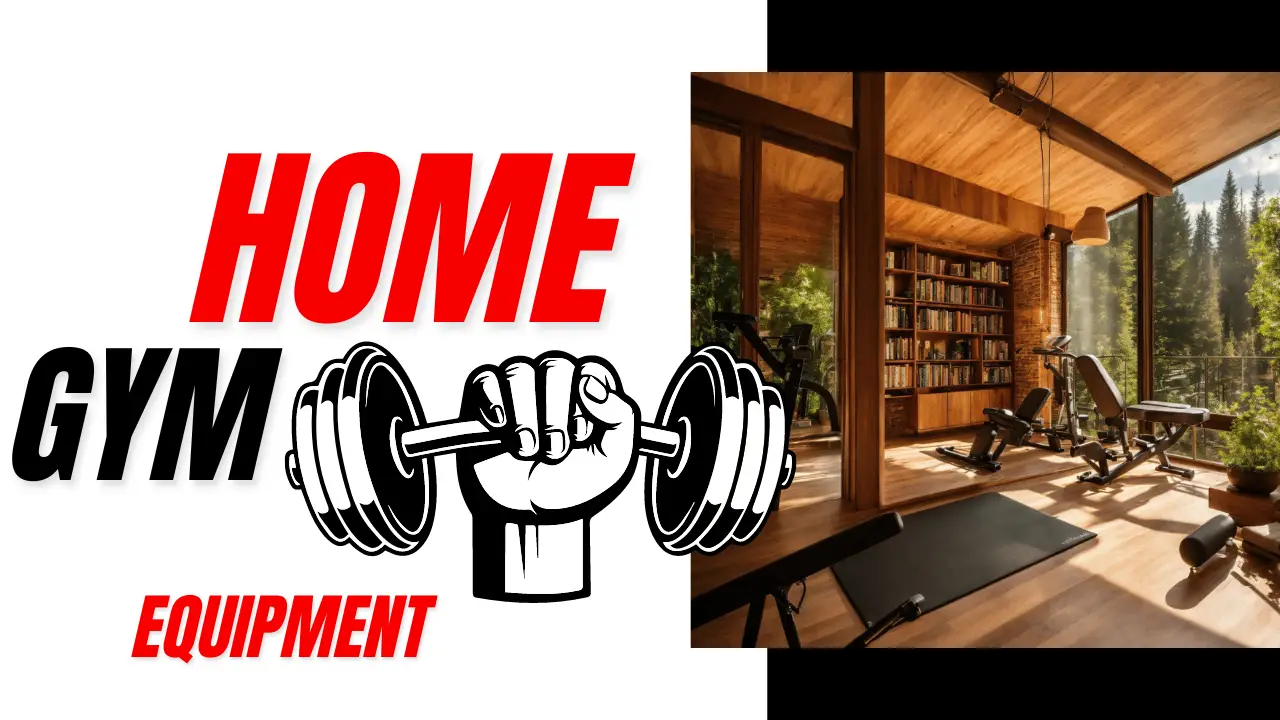
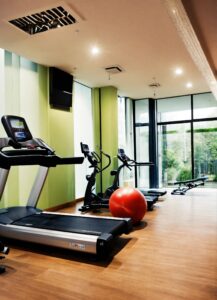

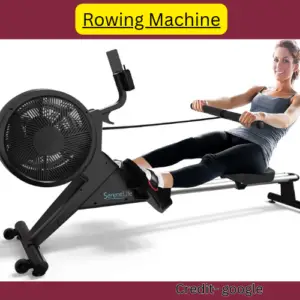

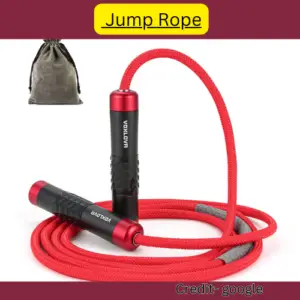
2 thoughts on “Essential Home Gym Equipment: Building Your Perfect Workout Space”